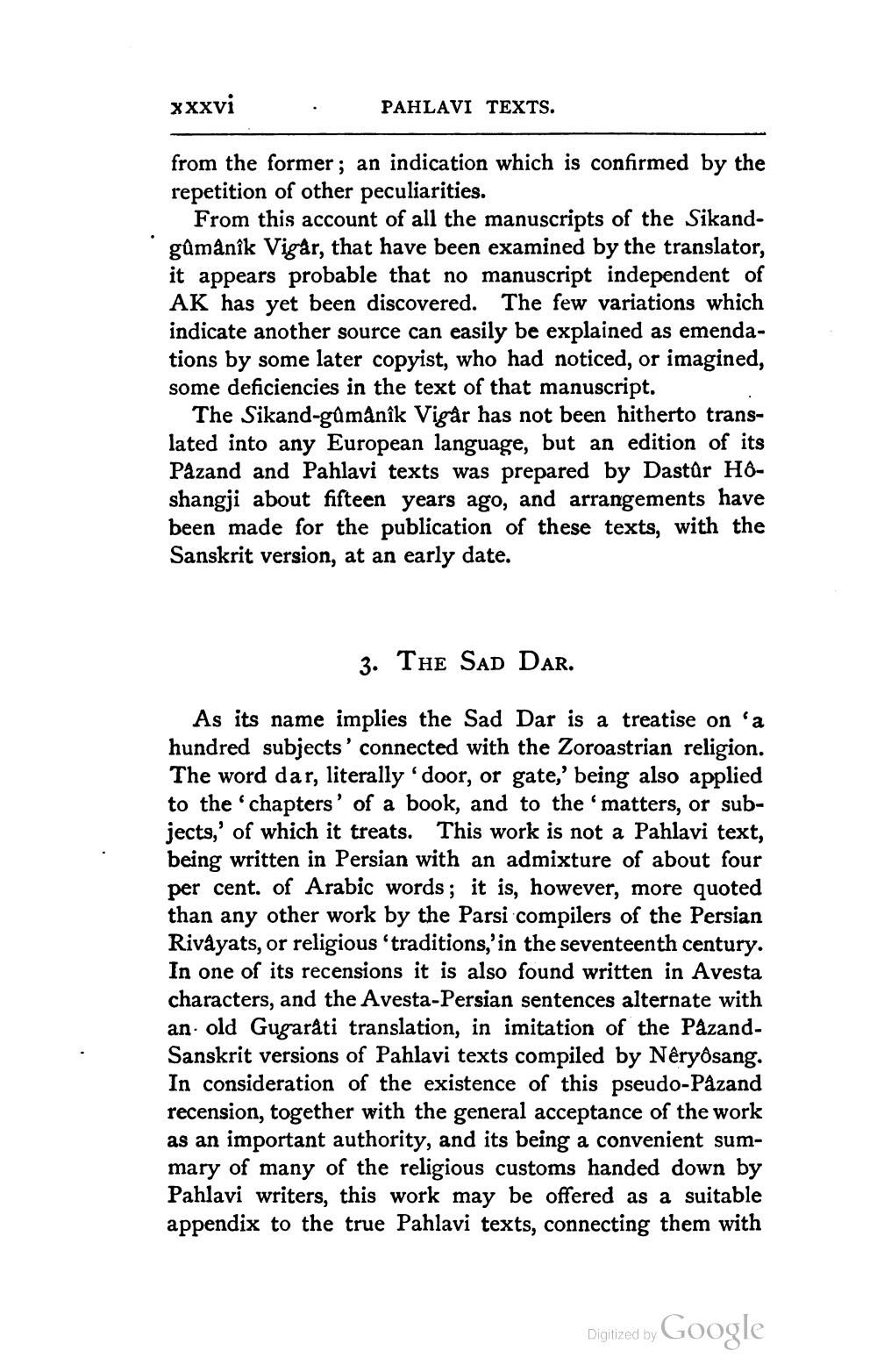________________
xxxvi
PAHLAVI TEXTS.
from the former; an indication which is confirmed by the repetition of other peculiarities.
From this account of all the manuscripts of the Sikandgümanik Vigar, that have been examined by the translator, it appears probable that no manuscript independent of AK has yet been discovered. The few variations which indicate another source can easily be explained as emendations by some later copyist, who had noticed, or imagined, some deficiencies in the text of that manuscript.
The Sikand-gümanîk Vigår has not been hitherto translated into any European language, but an edition of its Pazand and Pahlavi texts was prepared by Dastûr Hôshangji about fifteen years ago, and arrangements have been made for the publication of these texts, with the Sanskrit version, at an early date.
3. The Sad DAR.
As its name implies the Sad Dar is a treatise on 'a hundred subjects' connected with the Zoroastrian religion. The word dar, literally 'door, or gate,' being also applied to the chapters' of a book, and to the matters, or subjects,' of which it treats. This work is not a Pahlavi text, being written in Persian with an admixture of about four per cent. of Arabic words; it is, however, more quoted than any other work by the Parsi compilers of the Persian Rivayats, or religious 'traditions,' in the seventeenth century. In one of its recensions it is also found written in Avesta characters, and the Avesta-Persian sentences alternate with an old Gugarati translation, in imitation of the PazandSanskrit versions of Pahlavi texts compiled by Nêryðsang. In consideration of the existence of this pseudo-Pazand recension, together with the general acceptance of the work as an important authority, and its being a convenient summary of many of the religious customs handed down by Pahlavi writers, this work may be offered as a suitable appendix to the true Pahlavi texts, connecting them with
Digitized by Google




